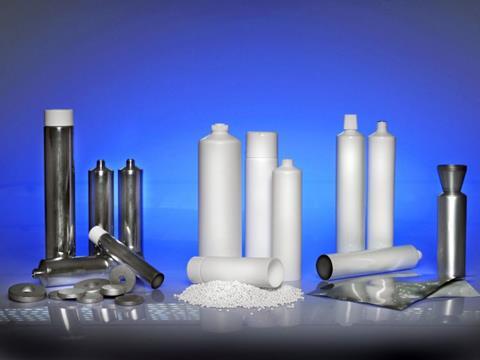
With total production of 10.5 billion tubes in 2017, the member companies of etma – the European tube manufacturers association – continued their path of growth and achieved a year-on-year increase in production of two per cent.
Overall, the member companies thus account for some 70 per cent of total European tube production.
“This means the figures reported by our members are a fairly reliable reflection of the situation in the European tube market as a whole,” explains etma’s secretary general Gregor Spengler. “The market shares for laminate tubes, with some 37 per cent, and aluminium tubes, with about 36 per cent, are virtually the same. The remaining 27 per cent of European production is attributable to plastic tubes.”
The broadly diversified cosmetics sector is still the largest market for tubes in Europe, and at the same time is an important growth driver. It accounts for about 45 per cent of all tubes produced. It is followed by market shares of 21 per cent each for tubes for toothpaste and the pharmaceutical sector. However, the food sector with an eight per cent share and the household products segment with a five per cent share represent markets with a promising future, whose opportunities are far from fully developed.
Overall, etma’s president Oliver Höll is looking forward with confidence to developments in 2018: “Solid order intake, a robust economic situation in Europe and numerous new and innovative projects with clients are the key reasons for the tube producers’ positive underlying mood. The development of novel closure and dispenser systems for the tube, a discernible increase in customisation and an abundance of sophisticated decorative techniques provide the market with additional stimuli, boost demand and give the tube industry reasonable grounds for optimism.”
The sector is currently enjoying stable demand and full order books. However, for certain tube diameters this is also leading to relatively long delivery times, and this is presenting a real challenge. The trend towards ever-smaller lot sizes, which has been continuing unabated for many years, is also resulting in expensive and time-consuming changeover efforts of tube manufacturers and thereby making optimal line utilisation more difficult. Furthermore, the tube producers have to face rising costs for aluminium, lacquers, printing inks and transport services, and this is dampening the otherwise good sentiment.
Nevertheless, Oliver Höll is convinced the etma member companies will also master these challenges thanks to their creativity, process optimisation and their innovative capability. All in all, the sector is very well positioned and is therefore justifiably in a positive mood. After all, the markets have increasingly discovered the outstanding properties of the tube as packaging and its numerous benefits compared with alternative forms of packaging: “Clients and consumers alike are increasingly rewarding the tube’s excellent functionality and consumer convenience as well as its compelling sustainability,” he says. “They appreciate the excellent product protection and high standards of hygiene the tube offers. Furthermore, the tube scores points in daily use with its ease of handling, exact portioning and precise application of the contents. On top of this there is also its lightness and resealability as well as its impressive resource efficiency, something that is becoming increasingly important nowadays.”
More info:











